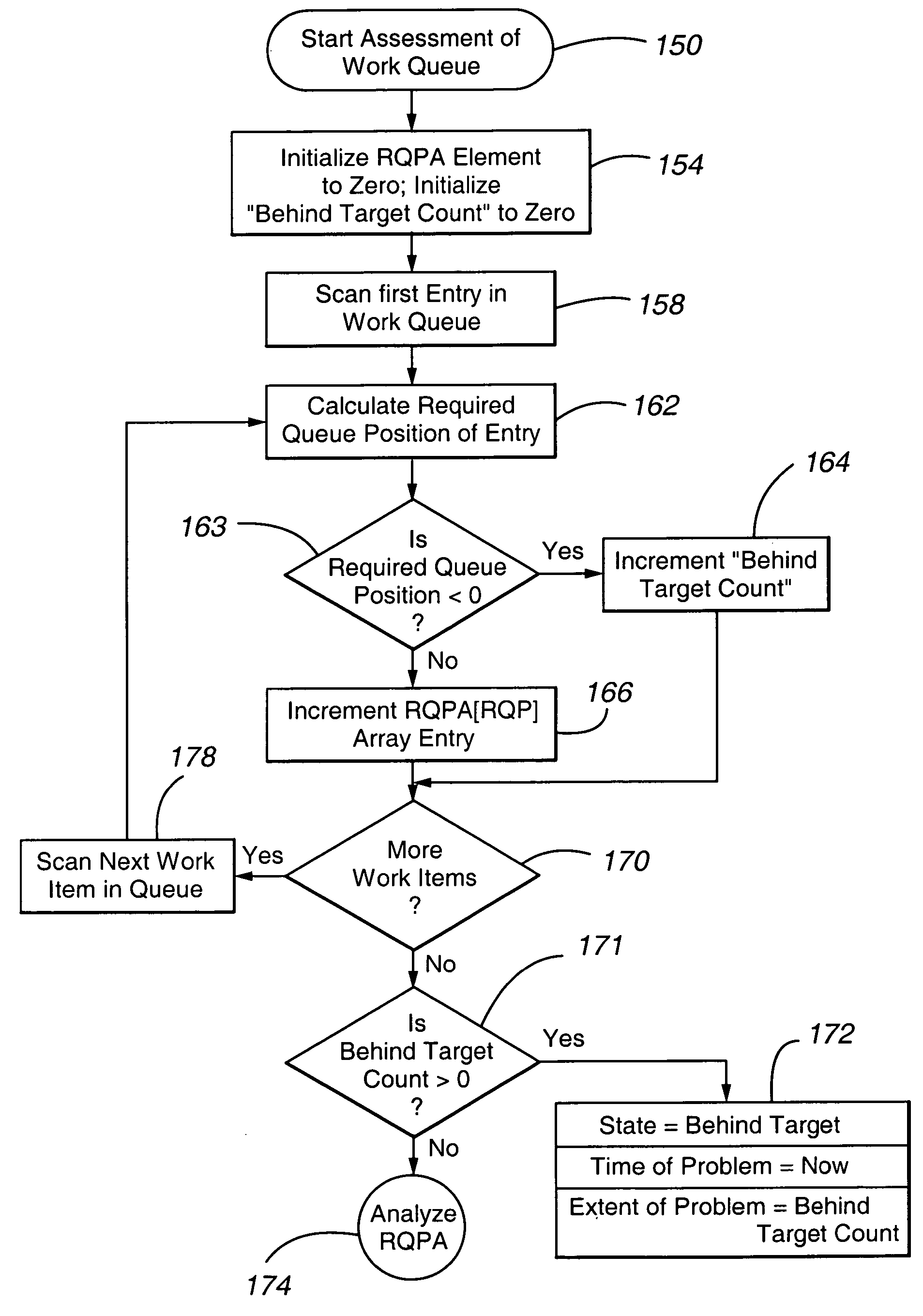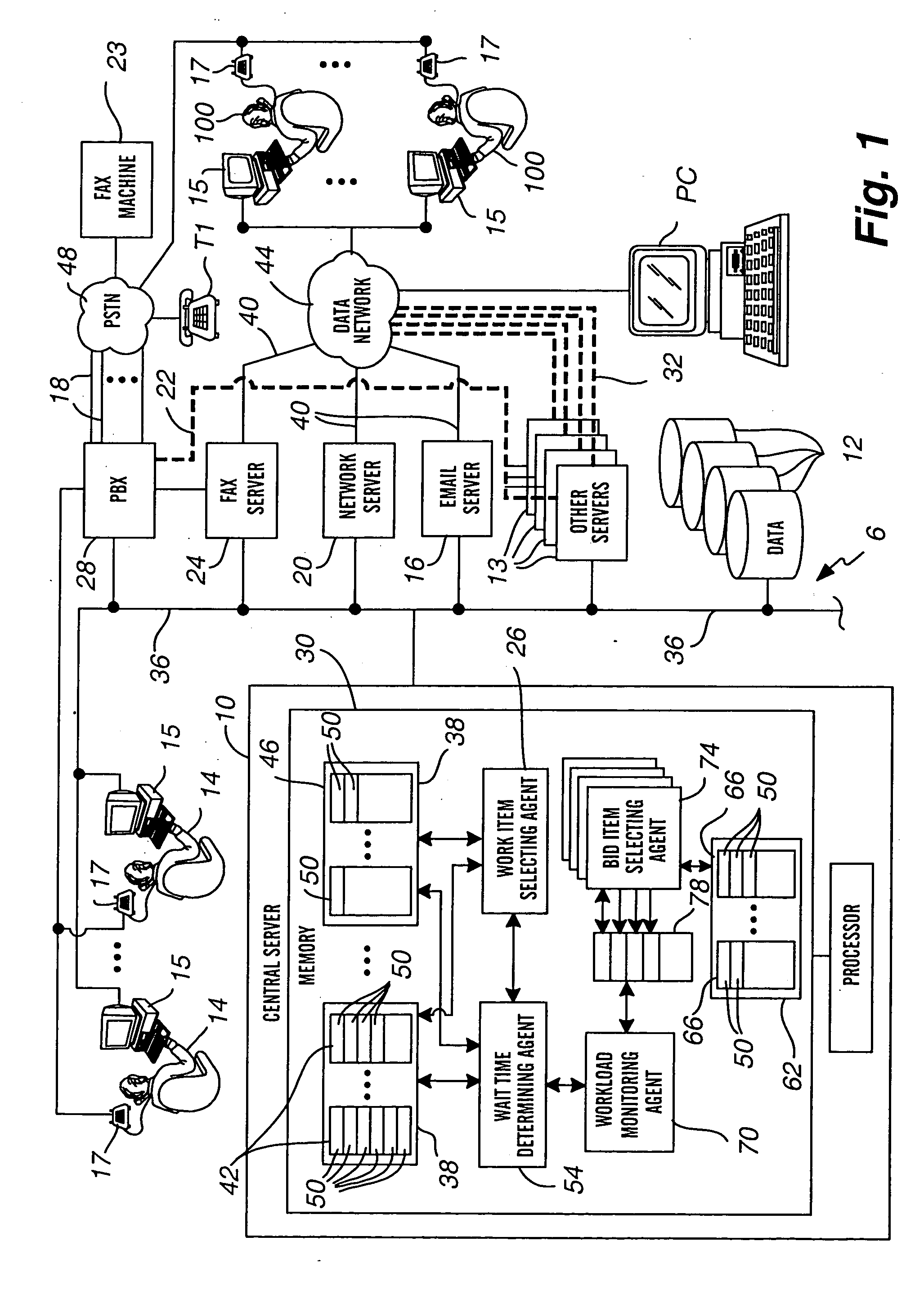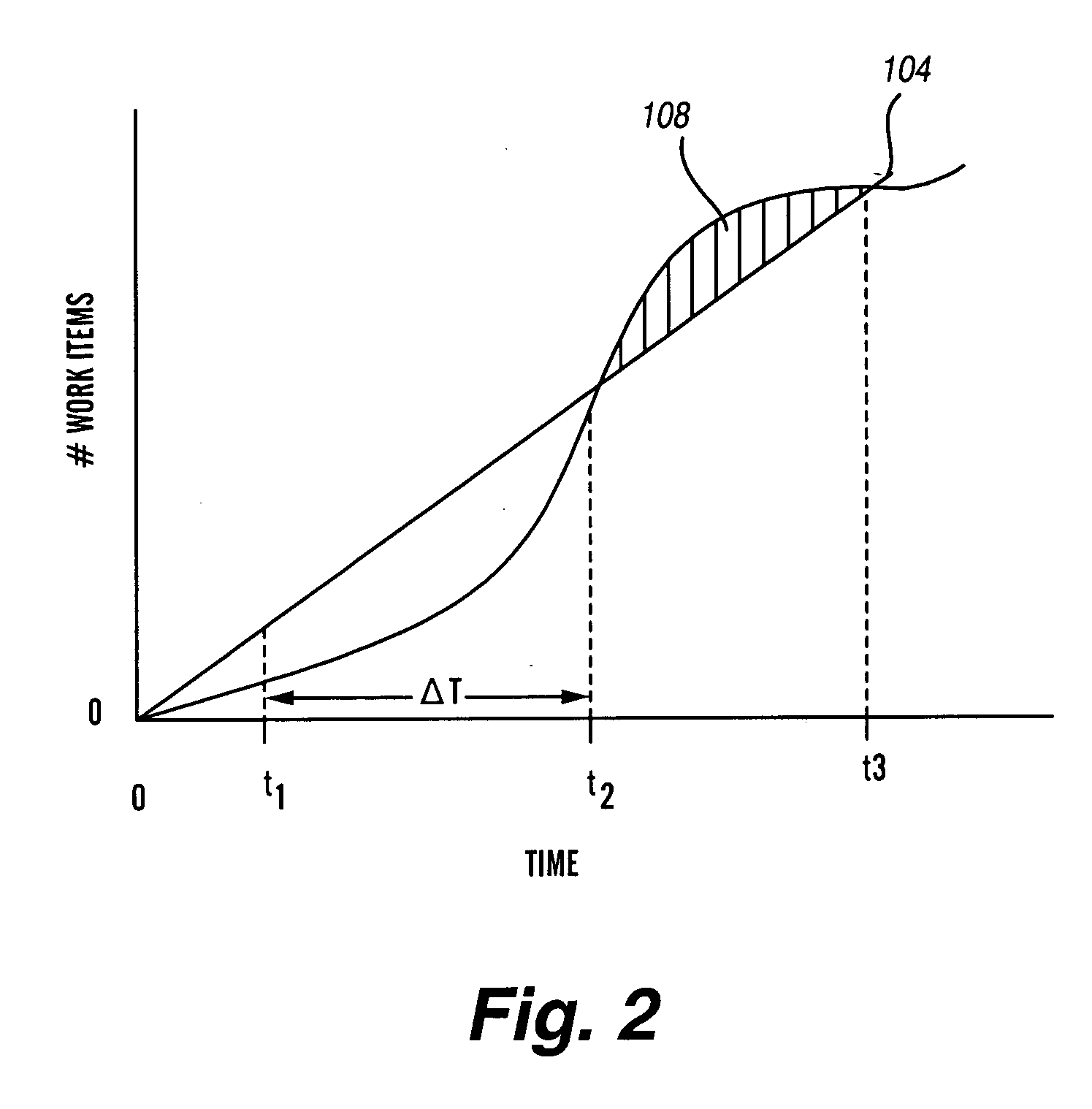Method and apparatus for assessing the status of work waiting for service
a technology for status assessment and work items, applied in the field of scheduling work items, can solve problems such as reducing customer satisfaction, affecting service time, and insufficient resources for handling contacts with service time goals at some point in the futur
- Summary
- Abstract
- Description
- Claims
- Application Information
AI Technical Summary
Problems solved by technology
Method used
Image
Examples
Embodiment Construction
FIG. 1 shows an illustrative embodiment of the present invention.
A contact center 6 comprises a central server 10 (such as a Definity™ or Multi-Vantage™ Enterprise Communications Server running modified Advocate™ software of Avaya, Inc.), a set of data stores or databases 12 containing contact or customer related information and other information that can enhance the value and efficiency of the contact, a plurality of servers, namely a fax server 24, a data network server 20, an email server 16, and other servers 13, a private branch exchange PBX 28 (or private automatic exchange PAX), a first plurality or set of resources 14 (which are shown as being human agents) operating computer work stations 15, such as personal computers, and / or telephones 17 or other type of voice communications equipment, all interconnected by a local area network LAN (or wide area network WAN) 36, and a second plurality or set of resources 100 (which are shown as being human agents) also operating compute...
PUM
 Login to View More
Login to View More Abstract
Description
Claims
Application Information
 Login to View More
Login to View More - R&D
- Intellectual Property
- Life Sciences
- Materials
- Tech Scout
- Unparalleled Data Quality
- Higher Quality Content
- 60% Fewer Hallucinations
Browse by: Latest US Patents, China's latest patents, Technical Efficacy Thesaurus, Application Domain, Technology Topic, Popular Technical Reports.
© 2025 PatSnap. All rights reserved.Legal|Privacy policy|Modern Slavery Act Transparency Statement|Sitemap|About US| Contact US: help@patsnap.com



